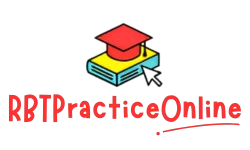Welcome to the second section of our RBT Study Guide.
This unit focuses on Assessment, a foundational skill area where RBTs support behavior analysts in identifying client needs and what motivates learning.
It’s a key part of building effective, ethical treatment plans.
What is Assessment?
In ABA, assessment refers to the process of gathering meaningful information about a client’s skills, preferences, and behaviors.
It helps behavior analysts determine what to teach, how to teach it, and how to reduce behaviors that interfere with learning or safety.
Here are the tasks you’ll be expected to understand and perform during the Assessment unit:
- Conduct preference assessments
- Assist with individualized assessment procedures (e.g., curriculum-based, developmental, social skills)
- Assist with functional assessment procedures
Task B-1: Conduct Preference Assessments
RBTs help determine which items, activities, or social interactions a client prefers. These preferences guide what might serve as effective reinforcers in skill-building and behavior reduction programs.
There are three commonly used types of preference assessments:
1. Single Stimulus
Present one item at a time. Record whether the client interacts with or avoids it. This method is simple and useful for individuals who have difficulty choosing.
2. Paired Stimulus (Forced Choice)
Present two items and ask the client to pick one. Repeat across multiple pairs to identify consistent preferences. This method helps rank items by preference.
3. Multiple Stimulus
Present multiple items at once. You can use:
- With Replacement (MSW) – Replace the chosen item each time.
- Without Replacement (MSWO) – Remove the chosen item after each trial.
Preference assessments should be conducted in a consistent environment, and client behavior should be observed closely.
Remember, preference does not always equal reinforcement – items identified as preferred must still be tested to confirm they increase the target behavior.
B-2: Assist with Individualized Assessment Procedures
As an RBT, you’ll often support the supervising behavior analyst by helping administer assessments that evaluate a client’s current skill level and developmental progress.
These assessments are typically tailored to the individual and may be formal or informal in nature.
Your role is not to interpret results or decide what to assess but to follow instructions precisely, collect accurate data, and ensure consistency across sessions.
Examples of assessments you may assist with include:
1. Curriculum-Based Assessments
Tools like the VB-MAPP or ABLLS-R assess a client’s verbal behavior, academic readiness, or daily living skills. You may be asked to prompt responses, present materials, or record data during these tasks.
2. Developmental Assessments
These evaluate how the client compares to typical developmental milestones. You may assist in observing behavior across natural settings (e.g., during play or transitions) and record skill demonstrations.
3. Social Skills Probes
For clients with goals around communication, peer interaction, or group play, you might be asked to set up scenarios that allow these behaviors to occur naturally while collecting data on responses.
Key things to remember:
- Stick to the assessment protocol given by the BCBA.
- Use consistent prompting and reinforcement when instructed.
- Record objective data — avoid assumptions or interpretations.
- Don’t change materials or instructions without approval.
This task is about supporting valid data collection that helps guide treatment planning. Even though you’re not analyzing the results, your accuracy as an RBT directly impacts the quality of the behavioral intervention.
B-3: Assist with Functional Assessment Procedures
Functional assessments are conducted to understand why a behavior is occurring — in other words, to identify its purpose or function.
Behaviors that interfere with learning or safety often serve one or more functions: to gain attention, access an item or activity, escape a demand, or obtain sensory stimulation.
As an RBT, you won’t be conducting the full functional assessment or drawing conclusions. Instead, your role is to assist the behavior analyst by accurately observing, recording, and sometimes participating in structured conditions designed to gather insights about the behavior.
Ways you may assist include:
- Collecting ABC Data
Record the Antecedent (what happened before), the Behavior, and the Consequence (what followed). This helps the BCBA identify patterns that may be influencing behavior. - Participating in Functional Analyses
In some cases, your supervisor may conduct a functional analysis — a structured procedure to test different causes of behavior. You may assist by following scripted conditions, presenting tasks or stimuli, and ensuring safety. - Taking Clear, Objective Notes
It’s critical that the data you collect is precise and unbiased. Avoid interpretations — stick to what you see and hear. - Reporting Observations Promptly
Timely communication with your BCBA helps ensure important behavioral patterns or triggers are not missed during assessment periods.
Your consistent, neutral, and reliable participation makes functional assessments more effective, ultimately leading to better-informed behavior plans.
